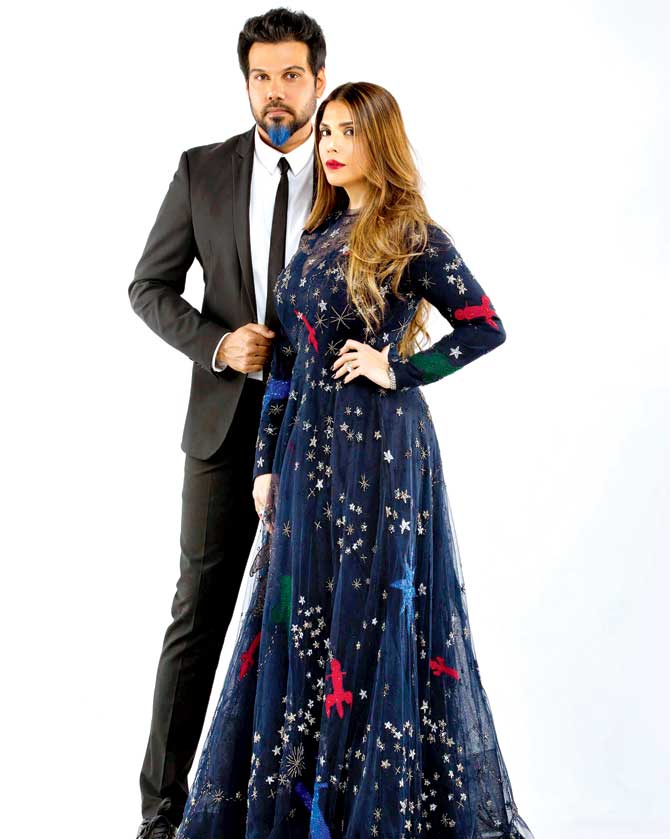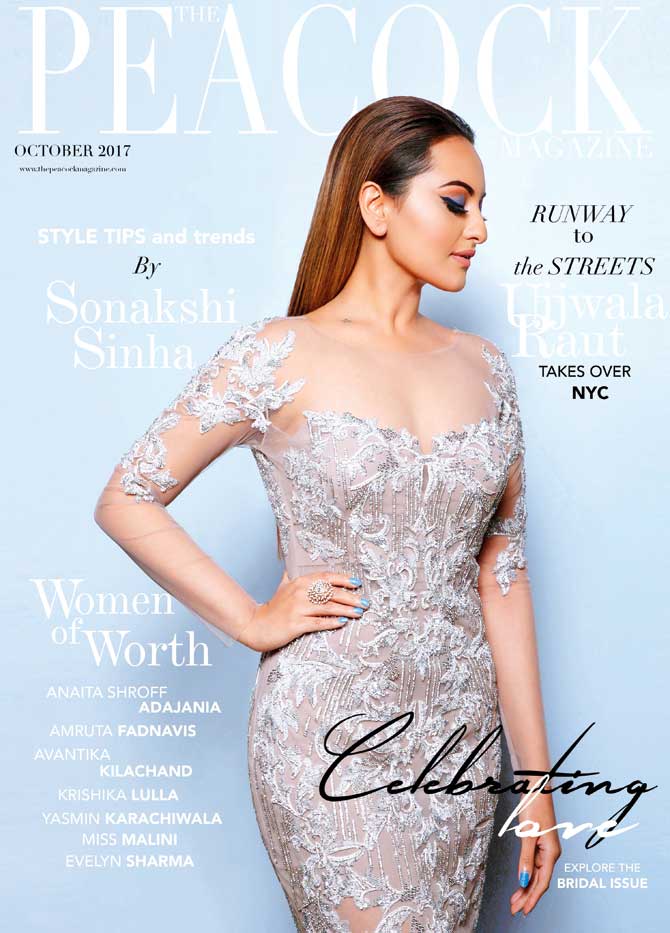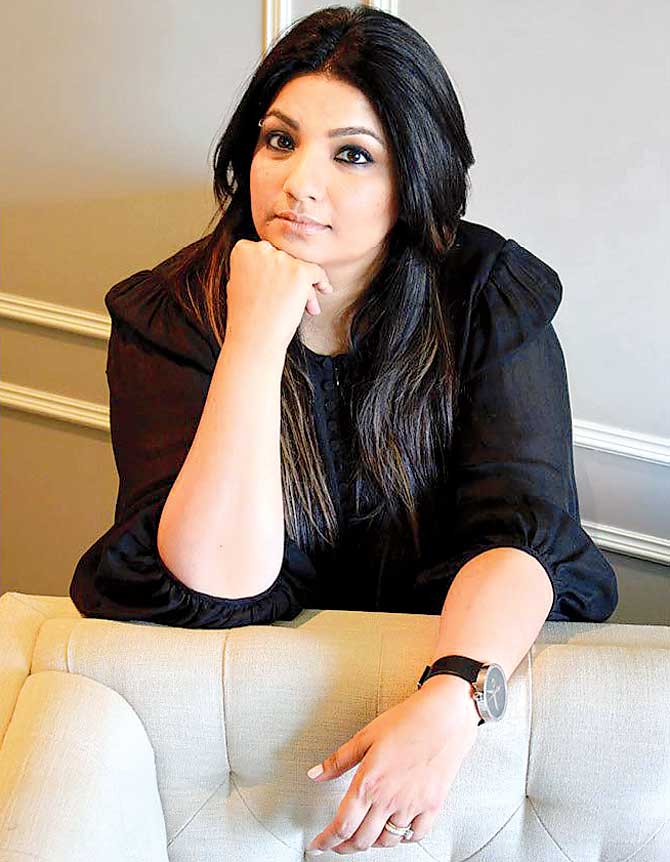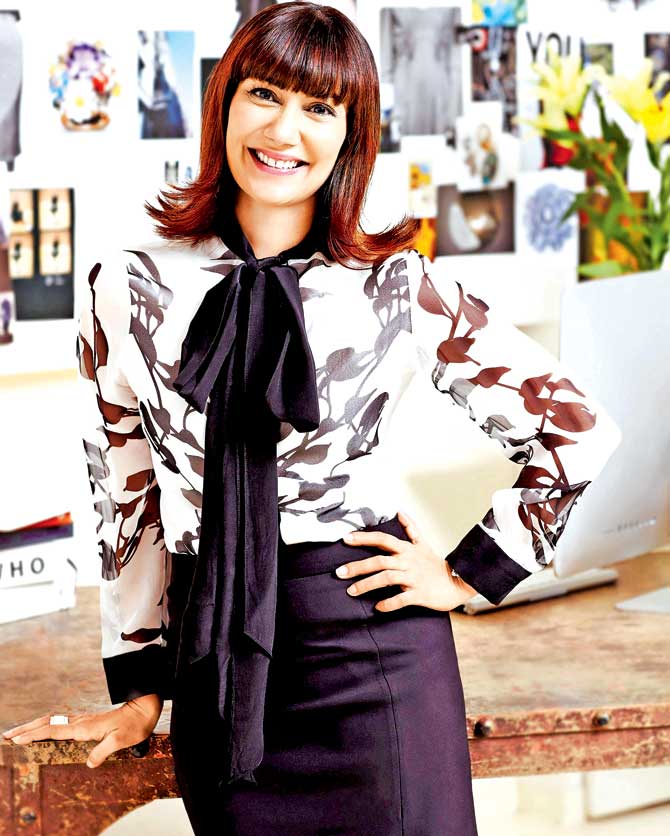With two Mumbai designers launching digital magazines with delicious content and the instant chance to shop for their brand, will the retail game experience a change. And where does this leave haughty fashion mags?

It may be wishful thinking that's ahead of its time, much like saying digital will eventually kill print, but, it's a question worth asking - can brand-centric e-mags quash the hegemony of fashion magazines? Mumbai designers Payal Singhal and Falguni & Shane Peacock recently launched their digital magazines. The October issue of The Peacock Magazine features Sonakshi Sinha on the cover, with arms positioned just so, leaving the sheer gown with handwork and ravelled feathers, in focus. It's the garment that Sonakshi wore when she walked the ramp for the designer couple in September.
ADVERTISEMENT

Designers Falguni & Shane Peacock
A flip into the issue leads you to the customary editorial, this one featuring supermodel Ujjwala Raut snapped on the streets of Manhattan. Segments on celebrity style, making trends work for you, and even a features section that carries interviews with stylist Anaita Shroff Adajania on working in Bollywood, and celebrity fitness expert Yasmin Karachiwala discussing Katrina Kaif's physique, follow next. Much like any magazine with cracker production value. The focus, of course, is on the said designer. Every outfit featured here belongs to her label, and is up for sale. A click on a picture links you to a site where you can shop for that exact same outfit or accessory.

The October issue of The Peacock Magazine featuring Bollywood star Sonakshi Sinha
"The magazine was designed for our digitally-inclined customers, while the focus on video content is to appeal to the millennial clients, who prefer to view quick celebrity bytes. We could have produced a look-book instead, but an e-magazine helps us engage with our clients on the brand's activities and endorsements," says Falguni.

Juice's September 2016 cover featured Nargis Fakhri. E-commerce site Jabong's digi and print mag, Juice folded in 2016
The soon-to-be-launch November issue stars Jacqueline Fernandez on the cover. How does a designer persuade a Bollywood star to feature in what's essentially a brand editorial product? "Sonakshi was our showstopper, and she agreed right then to do this shoot. Similarly with Jacqueline. It's a symbiotic relationship, you know," she says.

PS Diary, Payal Singhal's e-magazine
Fashion e-magazines are essentially a repository of shop-able content, a creative way to monetise what you publish with the use of clever tagging, pop-ups and light boxes. It's a veritable multi-media festival curated to capture the shifting attention of the click-bait shopper, with videos, styling tips, celebrity scoops, party happenings, all in the hope of inspiring a spot of shopping.

Fashion entrepreneur Pernia Qureshi launched The Magazine, an e-mag associated with her fashion retail site, in 2013
Known for her resort-wear line, Singhal launched PS Diary, a bi-annual magazine that hits the Internet in April and December. "Instagram didn't seem to do justice to our vast product line, anymore," she says of her decision to launch the e-mag. "It is a selfish way to create a brand book, cover our collaborations, products and celebrity endorsements, but it works. It doesn't require an access password, so, it's open to anybody to visit and of course, shop. Every image takes you to a shopping page, followed by the on-site checkout system."

Payal Singhal
Entirely self-funded, the 44-page e-mag's debut issue focused on how to choose the perfect lehenga for a sangeet, a cocktail and a reception, accompanied by a lowdown on trending blouses. The price for connecting directly with your clients is high, as are logistical demands. Putting out an issue, including shoot budget, and paying a part-time staff of three to four writers-stylists-editors-designers, could come anywhere close to Rs 20 lakh.

Nonita Kalra, editor, Harper's Bazaar India
Pearl Shah was editor of Juice, one of the first brand-led digital magazines, launched in both digital and print avatars by e-commerce brand, Jabong. This was in 2014. Blurring the lines between content and commerce, Jabong published the bi-monthly mag that offered content you could click on and shop for. The print version sold on newsstands for Rs 75. "Juice helped give Jabong a voice and authority in the industry and the market," says Shah. The venture wrapped up in 2016 when Jabong's management saw a change.

Narendra Kumar, designer
"There's a time and place for marketing-driven ideas. Jabong arrived a bit too early," feels Srimoyi Bhattacharya. The digital publication industry in India is only seven years old, which is also when reading from handheld devices started to gain power. The founder of public relations firm Peepul, Bhattacharya admits that she is keen to explore opportunities for her clients, Manish Malhotra, Nirav Modi, Raw Mango, Good Earth and Forevermark, in the digital mag space.
"If you like an outfit in a glossy, it's common practice to tear off the page or take a photo, and use it as reference at your next shopping trip at the designer store. The format of a shop-able, e-mag offers instant gratification, cutting out the waiting period," she says, quickly suggesting that more than one brand can benefit from a said issue. "If there's an opportunity for Nirav to collaborate with PS Diary, I'd definitely make the suggestion," she says about the luxury jeweller she represents.
Both, Singhal and the Peacocks hope to monetise their enterprise through such collaborations or advertisements. Falguni says real estate developer Rustomjee came on board to advertise in The Peacock Magazine's first issue, but for now, they claim to be happy with increased visibility and customer traffic that the format has spawned. Pernia Qureshi is an old hand at the game.
In 2013, the actor and fashion entrepreneur curated The Magazine, a shop-able monthly that was associated with her e-tail website, Pernia's Pop-Up Shop. "There's your standard online shopping portal where it's imperative that the focus is on the product. But how do you make that product stylish and one the customer relates to? By creating content around it, with luxurious photo shoots. That's where the digital magazine comes in," she says, adding that an e-mag's personal, interactive nature allowed visitors to spend more time on her shopping website.
But she agrees it comes at a cost. "It's an expensive affair because you want to be on par with credible fashion magazines. You must hire the best hair and make-up artistes, and photographers, for the shoots. But, since all content is shop-able, you make your money," she says, sharing that she is in the midst of opening the site to advertisers.
Where does this leave the conventional fashion magazine, one that depends on designers like Singhal and Falguni for both, content inspiration and advertising? "E-mags can't topple fashion magazines, at least not the top of the lot. They will continue to survive because of the authority they carry. And I don't see why a mag will stop supporting say, the Falguni & Shane label. There's enough opportunity out there for everyone," says one editor, requesting not to be named.
Singhal and Falguni say they will continue to advertise with the two top fashion magazines the country produces. "I see no reason why we should stop. They cater to an entirely different audience, and we must remind potential customers that we are around," Singhal feels. Narendra Kumar used to edit Elle before he became a full time designer. Having straddled both worlds, he sees why e-mags are alluring. "The philosophy on which the designer mag is based reminds me of the time a group of designers including Versace, Armani, Calvin Klein, Céline etc., some of the biggest fashion players in the '90s, advertised on the front pages of Vogue.
By creating their own front-of-the-book editorials, they in a way, took over the power from editors." Editor of Harper's Bazaar India, Nonita Kalra is confident that good writing will never go out of style. "It is wonderful that fashion brands are using the magazine format for their own storytelling. It makes our job easier when people in the
fraternity use the same form of communication [as us]. It widens the base for continuing a conversation with words, on paper, instead of with images, on phones.
But of course, we come from a place of journalism, of authority, and of reportage, in an old school way. This allows us the impartiality to review and assess the industry as a whole. No designer will comment on his or her peers [in their e-mags]. Which is why we remain the opinion makers. The reader will still come to a magazine for its curation."
Kumar sees this as a period of transition. Magazines, he says, will be around for a while for the clout they enjoy over celebrities. "But, I do see a future where designers won't need magazines. To make this happen, they will have to come up with ingenious, smarter ways to market their e-mags."
 Subscribe today by clicking the link and stay updated with the latest news!" Click here!
Subscribe today by clicking the link and stay updated with the latest news!" Click here!






